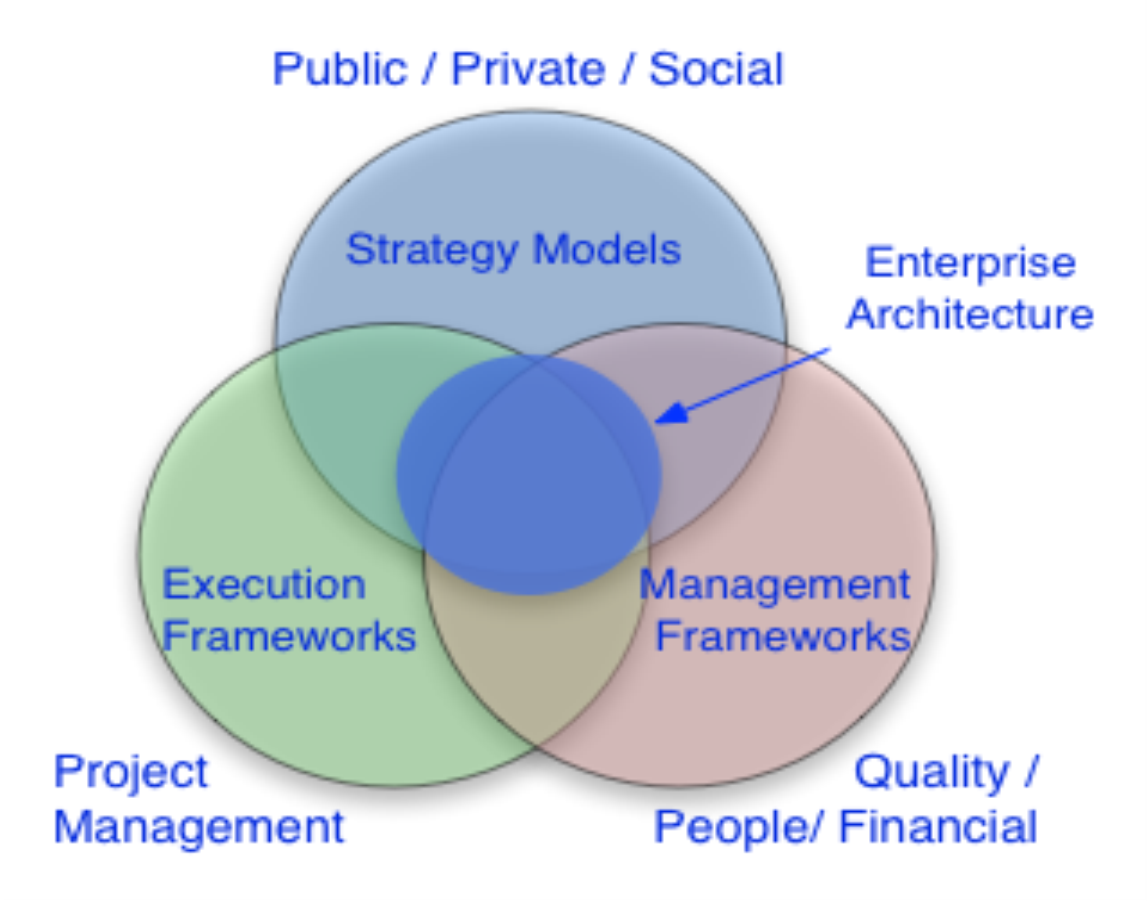7 Alignment with Other Frameworks
The TOGAF framework is one of several major frameworks used by most enterprises for architecture development. Alignment and interaction with other major enterprise frameworks is required for assurance of outcome and governance. These enterprise frameworks approach the enterprise with a different focus, purpose, and terminology.
This step requires the following questions to be answered:
- Is there a precedence of enterprise frameworks?
- What is the depth of commitment to different enterprise frameworks?
- How does the TOGAF framework fit in?
Getting stuck on semantics between definition of a framework, method, and technique at this point has stalled several EA Capability improvement initiatives. Avoid this pitfall and focus on creating a mapping to answer the questions above. The purpose of this activity is to identify how the enterprise approaches planning, execution, and governance functions and how committed the enterprise is to these approaches, how established the approaches are, and how it thinks about itself.
7.1 Create a Catalog of Frameworks
The first step is to create a catalog of such frameworks and their area of focus. This catalog should focus on planning and execution (Project Management Institute (PMI), PRINCE2, Six Sigma), information systems governance and operation (Lean, COBIT, ITIL), and management and measurement frameworks (Balanced Scorecard and SABSA Enterprise Risk). It is important to also include industry-specific frameworks (SCOR and eTOM) and industry-specific architecture content frameworks (BIAN, DoDAF, DNDAF) that provide a view of business process and capability and an architecture description.
Group the frameworks against the econometric, accountability, and execution models like risk, accounting, and planning. The grouping may create an overlap view similar to Figure 11. Rationalize what is needed from each framework, method, or technique for effective operationalization of recommendations from the EA Capability (attaining the target state).
All mapping exercises require understanding of an enterprise’s depth of commitment to an approach. Many enterprises pay lip-service to a framework, adopting a few terminology elements and skipping substantive change. Focus all analysis and alignment on frameworks to which the enterprise is committed.

Figure 11: Relationships Across Framework Families[24]
7.2 Intersection with EA Capability
EA provides value in planning, change governance, and purposeful benefits realization. The depth of commitment to different frameworks will define how to adapt the EA Capability and the TOGAF framework.
This is an important concept. All of the outcomes that different frameworks provide regarding planning, change management, and benefits realization are required for a high-functioning EA Capability. Where they are provided, the EA Capability must fit in. Should there be a gap, the EA Capability must fill in. Adjust the roadmap to either fit the EA Capability into an existing capability or extend the EA Capability to fill a gap.
The next exercise is to understand the organizational dynamics to sequence the steps from one or more of these frameworks. As a starting point, The Open Group has published a set of mapping documents and White Papers to map the frameworks, methods, and techniques (see under “TOGAF” at www.opengroup.org/library/white-papers).
The scope of describing detailed fitting-in and filling-out options is beyond the scope of this Guide, as any reasonable exercise will vary dramatically across organizations. Further, the level of work explodes exponentially as differences in purpose and enterprise context are considered. This exercise provides an understanding of where the enterprise has gaps to effect best practice for change. The rest of the chapters in this Guide provide an insight into which touch-point from any of these frameworks should be considered for customizing the TOGAF ADM and aligning to an organization’s culture.
TOGAF® is a registered trademark of The Open Group
 return to top of page
return to top of page